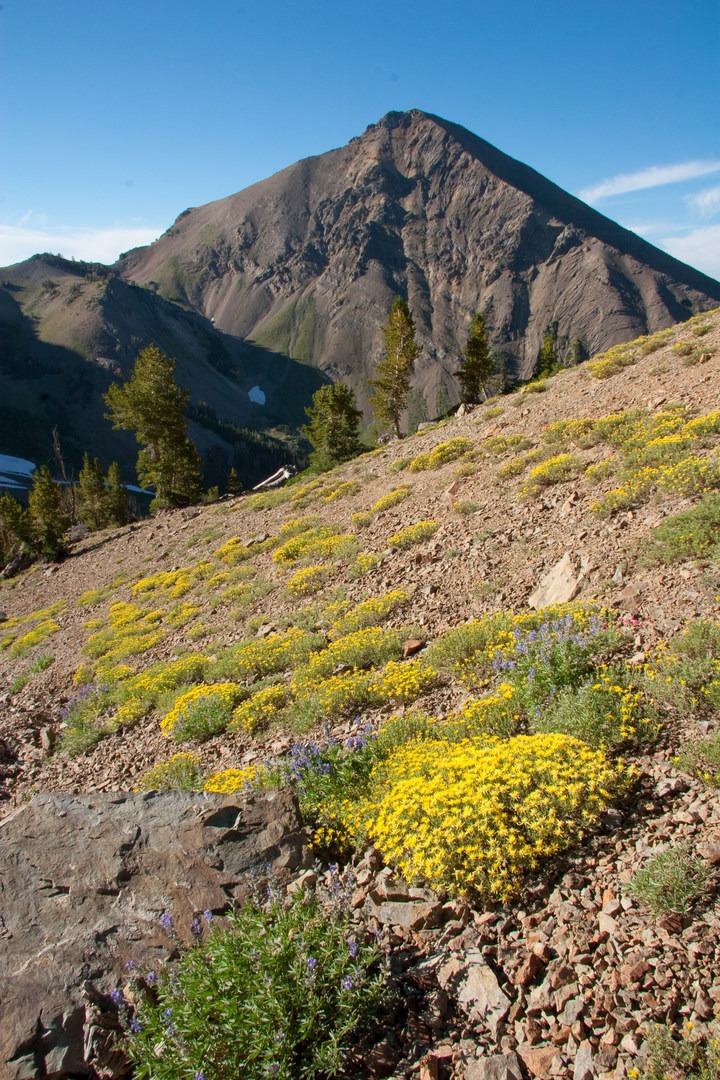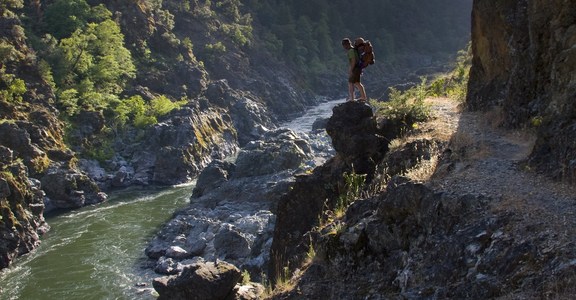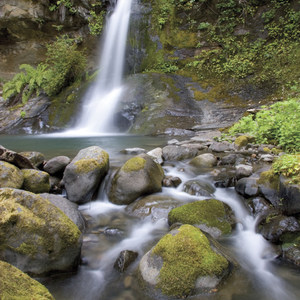North Fork of the Big Wood Overview
The North Fork of the Big Wood drainage is the hiking epicenter of the Boulder Mountains. The main canyon accesses two large tributaries, the West Fork of the North Fork (WFNF) and the East Fork of the North Fork (EFNF). The hikes ascend dramatic, steep-walled canyons that access multiple alpine cirques ringed by the highest peaks in the range. The West Pass Trail begins at a junction 1.7 miles up the North Fork of the Big Wood.
The underlying geology of the North Fork of the Big Wood River is a combination of sedimentary and volcanic rock. Neither is particularly durable, and both rock units tend to break apart. A wide variety of individual rock units provide a wash of reddish and brown hues that blend together in large, sweeping faces of talus and scree in the upper elevations. Below treeline much of the underlying rocks are covered with forests and soil, but canyon walls are consistently steep down to the valley floor.
West Pass Creek
The West Pass Creek Trail begins at a large cairn and sign in an open meadow 1.7 miles up the North Fork of the Big Wood. From the junction the trail climbs to West Pass, a divide with the Big Wood and the East Fork of the Salmon River. The hike is a grunt up sloping sage-covered benches on the north side of the creek. Scant wildflowers and views of a few rugged waterfalls offer some consolation for the steep and sometimes loose trail, but the real prize of this hike lies above 9,000 feet.
Once the slope begins to ease and you have a chance to catch your breath, take a moment to appreciate the sweeping west face of Kent Peak. This 2,000-foot face of shattered sedimentary rock forms multi-colored talus slopes that end in small patches of stunted trees. The broad basin beneath the southwest face of Kent Peak is covered in acres of yellow wildflowers by mid-July in a good year.
The final climb up a blunt ridge toward West Pass offers a better perspective of this huge basin. Folded sedimentary rocks exposed in the north face of Ibex Peak across the basin hint at the massive geologic forces that occurred when the Boulder Mountains were created.
Off-Trail Hiking
West Pass is the jumping off point for several off-trail scrambles to the highest peaks in the range. From West Pass, is it possible to climb several hundred feet of loose scree and talus to gain the south ridge of Ryan Peak. It is possible to connect Ryan and Kent Peaks via an airy and committing Class 4 ridge traverse.
A more moderate route to Kent peak, however, climbs the south ridge from the saddle between Kent and Ibex Peaks. The east ridge of Ibex peak offers the easiest route to the summit (though there is a little Class 4 route-finding at the top), and it can be included in a spectacular traverse that continues for several miles down the south ridge.
Reference: All content excerpted from Exploring Sun Valley - A Comprehensive Guide to the Boulder, Pioneer, and Smoky Mountains by Idaho River Publications.
Logistics + Planning
Current Weather: Powered by Dark Sky







Preferable season(s)
Congestion
Parking Pass
Pros
Cons
Trailhead Elevation
Features
Suitable for
Our mission is to inspire adventure with beautiful, comprehensive and waterproof map-based guidebooks. Owner, publisher, and photographer Matt Leidecker, grew up exploring and guiding on the rivers in central Idaho. His award winning Middle Fork of the Salmon River – A Comprehensive Guide is the standard by which other river guidebooks are measured. Printed on virtually indestructible YUPO paper, IRP guides are truly unique all-in-one resources for adventure. Each book is loaded with full-color maps, stunning photographs, and information on the history, geology, and wildflowers. Visit Idaho River Publications to explore our guidebooks to the Rogue River in Oregon and the mountains of Central Idaho.


















Comments
Sign In and share them.